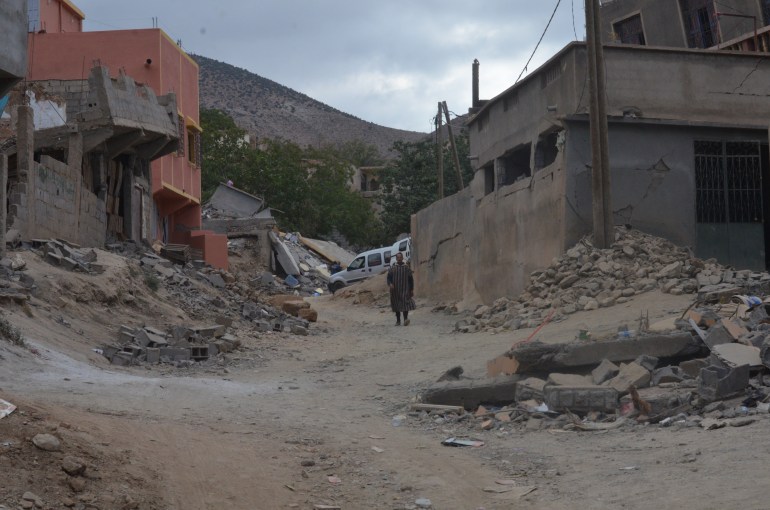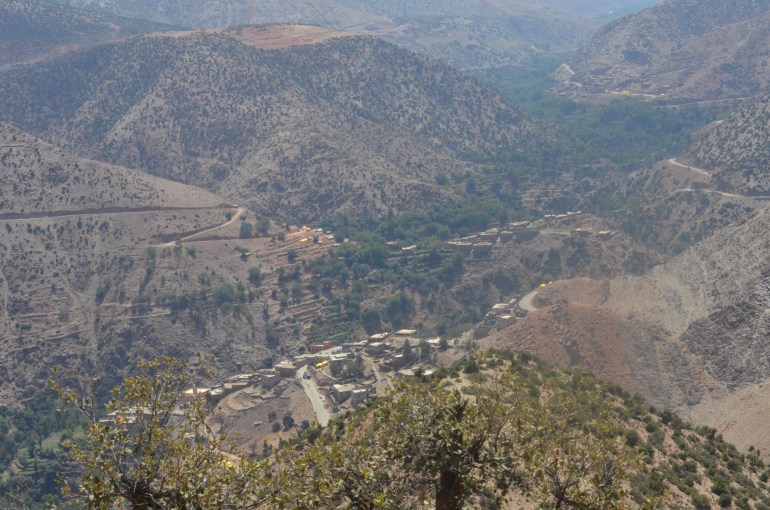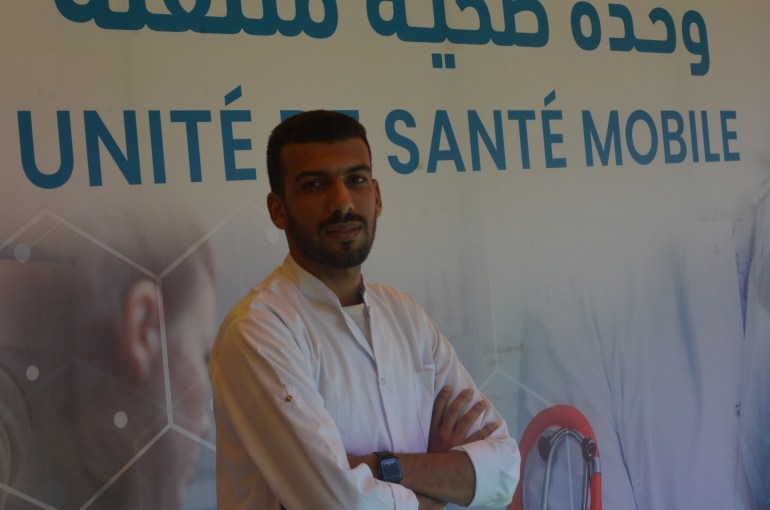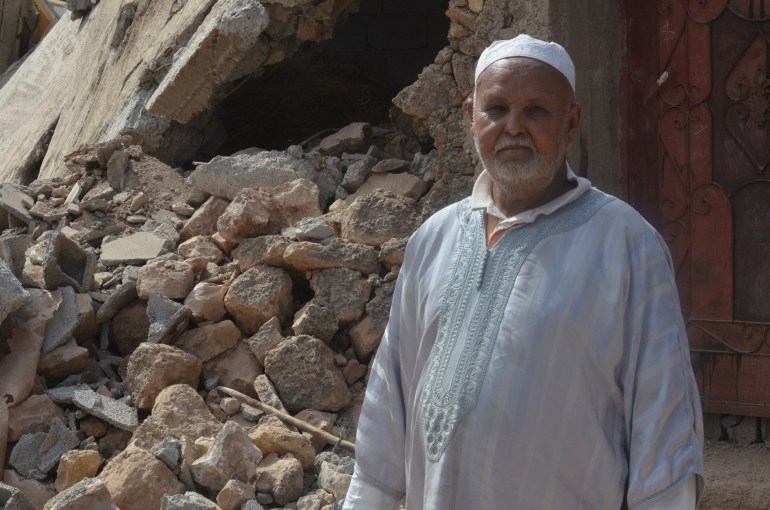It has been five days since the magnitude 6.8 earthquake ripped through the mountainous regions around Marrakesh, Morocco, and Abed’s daughter, nine-year-old Shaima, is still buried under the rocks.
Abed still hopes she may be alive, a family member explains, and he works with almost robotic energy as excavation efforts continue in Tnirte in the High Atlas Mountains. His wife was pulled dead from the rocks yesterday. Abed himself had been rescued on Saturday, the relative says.
Nearby, a small team of Spanish firefighters rise from their lunch to help in the search. They have sent the sniffer dogs home. Dogs can only smell the living, one explains.
Tnirte has two town centres, with rubble strewn across both. Along the track that connects the two, young men either ride or lead donkeys carrying aid from the delivery point at the bottom of the slope to where Abed works above.

Almost everyone here has lost someone. Abdel Ali, 22, escorts his donkey along the debris-strewn path, the smell of decay hanging in the air.
He pulls a twig from the side of the track and swats his donkey on its rear, hurrying it – and the emergency aid it carries – along. “My house was destroyed,” he tells a translator. “My grandfather and aunt were killed.”
Relief efforts in the region around Marrakesh are only just starting to ramp up. Morocco’s King Mohamed VI visited the city on Tuesday, lending his prestige to the efforts.
Outside of the city, in Amizmiz, international aid is announcing itself in the form of a camp.
Along rows of neatly-ordered tents, rescue teams from the United Kingdom, Qatar, Israel and other countries debate how to navigate the devastated terrain.
Russ Gordon, a team leader for the UK’s rescue mission, stands impatiently outside of one of the tents, the Union Jack flag propped up behind him.
“Access is a huge problem. Many routes have been cut off by boulders and large landslides. We’re working closely with the Moroccan civil defence and military and relying on their local knowledge of the area,” he says, before disappearing into the tent to talk aerial surveillance and deployments.

Medical aid clinics, constructed rapidly from flat packs, now dot many of the often single-track roads that line the mountains. In one, Dr Ismail Mesteri, 26, prepares for the patients he believes will come once they hear of the clinic.
However, even with his nursing team, his resources are limited. The most serious cases will need to be transported to the university hospital in Marrakesh, some two hours away, he said.
Mesteri gestures to the road outside, already jammed with cars waiting for a broken-down truck to be moved out of the way. ”People die trying to get to Marrakesh,” he said.
Traffic jams have posed a critical challenge to relief efforts. Narrow roads are sometimes blocked by heavy trucks that struggle with the difficult climb up the mountains.
They can impede the flow of relief trucks and ambulances to areas that need them most.
Villages and hamlets, sometimes far from the main roads, proved no match for the quake. But the tight paths that lead to them are now congested as relief trucks compete with donkeys and motorbikes for space.

Critics have argued that poverty as much as geology played a critical role in the destruction this region has faced.
The Moroccan government has promised an extensive rebuilding programme, with many residents likely to be offered new houses built to modern standards. Details are scarce but the logistics are daunting. Miles of winding, perilous roads must be widened. Houses that have stood for centuries must now be reimagined and renovated in line with current seismic retrofitting standards.
The changes are long overdue, Chef Lhassen Boqqi, who grew up in the High Atlas Mountains says. But something will be lost.
”It was already changing,” he says from behind the wheel of a four-wheel drive. ”Young people no longer wanted to live in the villages. They wanted to go to Marrakesh and get educated but the mountains remain our home.”
Reflecting on the peaks around him, he continues: “They’re like pillars. They’re safe, now that it is over.” But Boqqi believes change will come to the region anyway. “Many more will leave for the city and those that remain will live in concrete houses.”

Many of the survivors, though, are just grateful to be alive. In Anerni, 34 people died during the earthquake. Seven remain in hospital. The rest tussle over aid deliveries in the makeshift camp.
Ahmed al-Hajj, 84, stands outside what had once been his house. He had been away at the time the quake hit. Now, all that remains are ruins. His sister died in the quake. Three children were also killed, he says.
He gestures to the ruined mosque, where the imam’s son was killed. Next to it rises a high mound of rubble. Close to its peak, on the remnants of a roof, blood is visible.
This region will take years to recover, experts warn. But for many of its inhabitants, the damage may be permanent.
